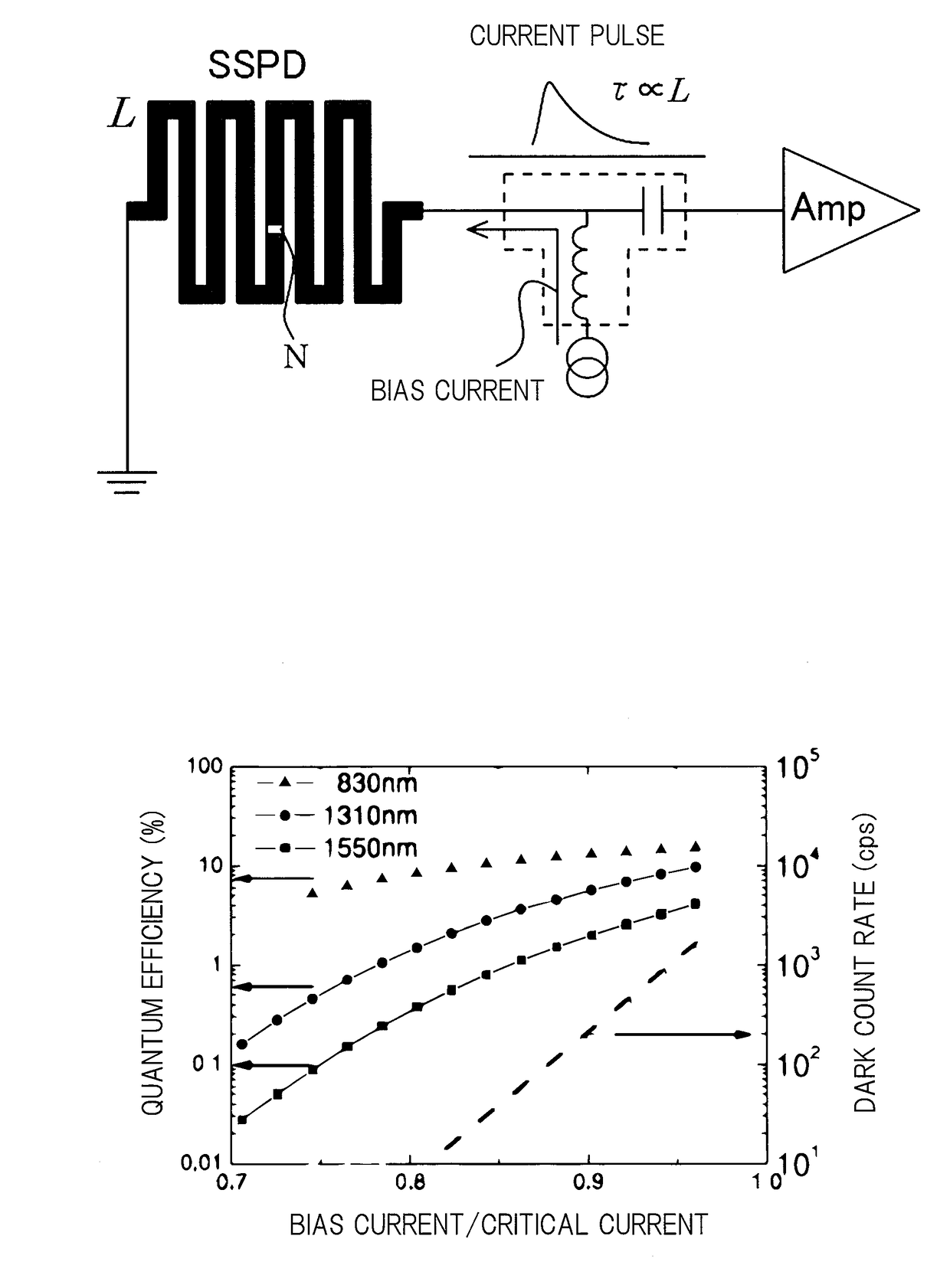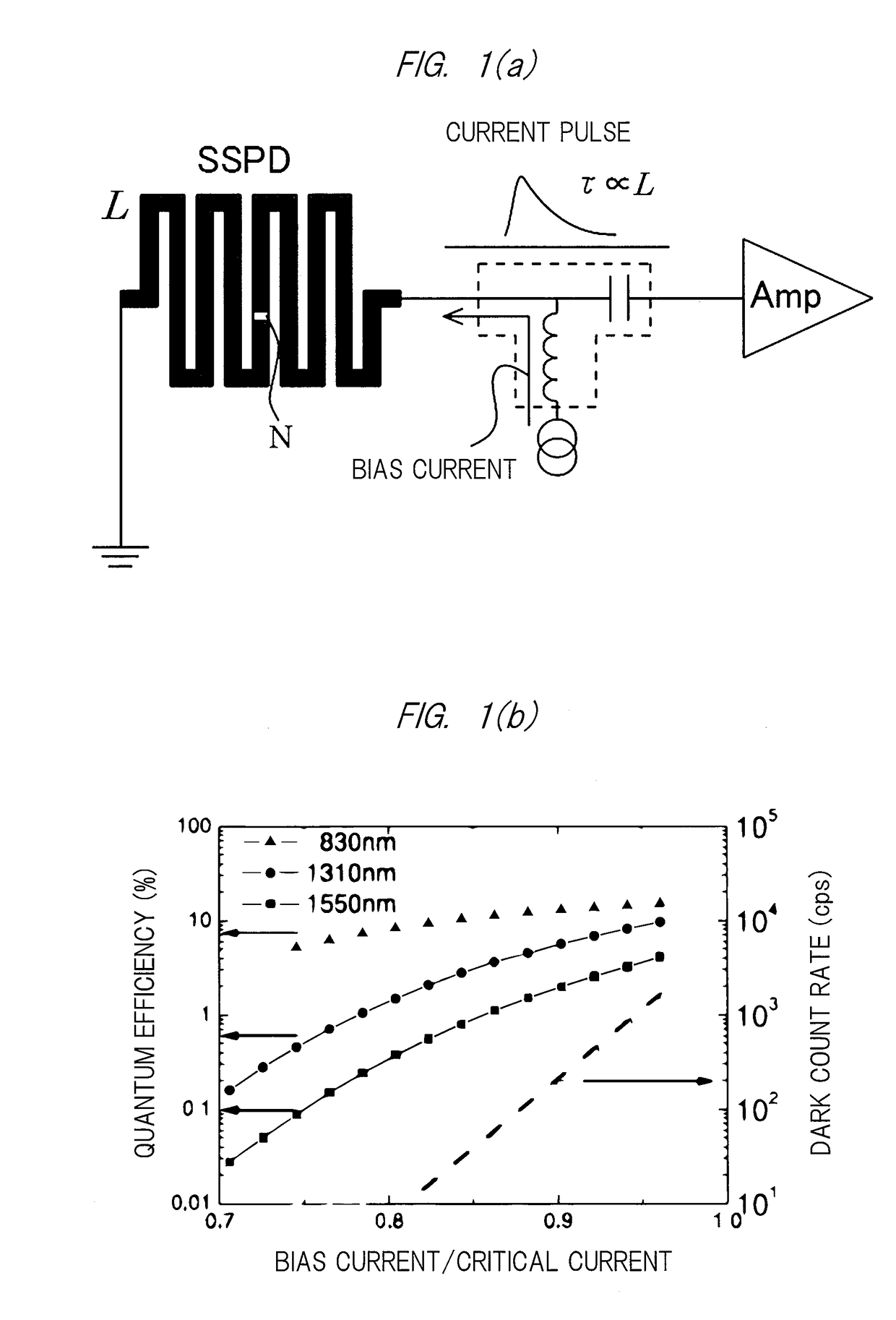Photon detection device and photon detection method
- Summary
- Abstract
- Description
- Claims
- Application Information
AI Technical Summary
Benefits of technology
Problems solved by technology
Method used
Image
Examples
first embodiment
[0042]An outline of a first embodiment of the present invention is illustrated in FIG. 2.
[0043]A photon detection device 10 mainly includes a superconducting stripline 1 and a Josephson transmission line (JTL) circuit 4 serving as a single flux quantum (SFQ) circuit.
[0044]The superconducting stripline 1 is a long plate-shaped member whose plate surface is a photon detection surface. This superconducting stripline 1 is not particularly limited and may be suitably selected from known ones to be used.
[0045]Moreover, a shape of the superconducting stripline 1 is not particularly limited. Herein, the superconducting stripline 1 has a linear shape for the purpose of stabilizing magnetic flux detection in the JTL circuit 4 by excluding the magnetic flux, which is excluded from the superconducting stripline 1, in a direction orthogonal to a length direction of the line. However, even in the case of the linear shape, this does not hinder addition of a portion with a shape other than a linear...
second embodiment
[0080]Next, a second embodiment of the present invention will be described. FIG. 4 is an explanatory diagram illustrating an outline of the second embodiment of the present invention.
[0081]A photon detection device 50 is mainly constituted by monolithically forming superconducting striplines 1a to 1d, JTL circuits 4a to 4d, integrated input circuits (confluence buffer (CB)) 7a to 7c, an SFQ logic circuit 6, an optical waveguide 8b, photon detection sections, and a comparator circuit on a substrate 8a. Note that, since the detail of each part of the superconducting striplines 1a to 1d, the JTL circuits 4a to 4d, the SFQ logic circuit 6, the photon detection sections, and the comparator circuit is the same as that of each of the superconducting stripline 1, the JTL circuit 4, the SFQ logic circuit 6, the photon detection section, and the comparator circuit in the photon detection device 10, descriptions on configuration and operation of each part are omitted.
[0082]The superconducting ...
third embodiment
[0093]Next, a third embodiment of the present invention will be described. FIG. 5 is an explanatory diagram illustrating an outline of the third embodiment of the present invention.
[0094]A photon detection device 100 illustrated in FIG. 5 is constituted as a monolithic device in which a plurality of photon detection arrays 9 in the photon detection device 50 illustrated in FIG. 4 are arranged on the same substrate. Other than this, the photon detection device 100 is the same as the photon detection device 50, and thus, description thereof is omitted.
[0095]According to this photon detection device 100, a photon from a light supply source such as an independent optical fiber or the like can be independently detected by each photon detection array 9, and communication signals from a plurality of information sources can be processed. For example, in a setup of polarization (4)×dual wavelength multiplexing (2)×transmission / reception (2), which is the basic setup of quantum entangled quan...
PUM
 Login to View More
Login to View More Abstract
Description
Claims
Application Information
 Login to View More
Login to View More - R&D
- Intellectual Property
- Life Sciences
- Materials
- Tech Scout
- Unparalleled Data Quality
- Higher Quality Content
- 60% Fewer Hallucinations
Browse by: Latest US Patents, China's latest patents, Technical Efficacy Thesaurus, Application Domain, Technology Topic, Popular Technical Reports.
© 2025 PatSnap. All rights reserved.Legal|Privacy policy|Modern Slavery Act Transparency Statement|Sitemap|About US| Contact US: help@patsnap.com



